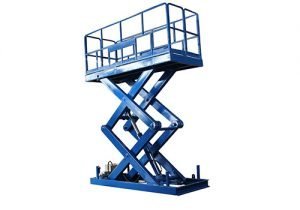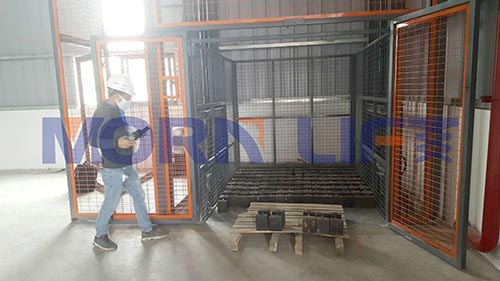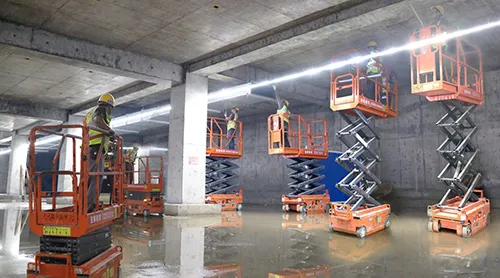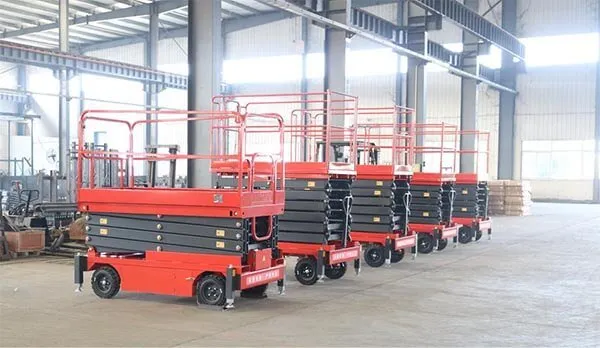Scissor lift is a fabulous assistant in those jobs that we need to lift goods or workers into high workplaces from the ground level. Powered by hydraulic cylinders, the scissor lifts are armed with sufficient impetus to elevate the load on their platforms.
The lifting height is mainly decided by the number of scissors. As the name implies, scissors are crossing struts with hinge pins in the middle and at the ends, just like the scissors we used in daily life to cut things. The lowest platform can be supported only by one pair of scissors, which can raise the load to a short vertical distance above the ground but with the most stable state.

In order to lift the load higher, more pairs of scissors are needed. Usually more scissors mean more distance the load will be elevated and more shaky the scissor lifts will be, so reasonable number of scissors must be considered to keep safety.
How to choose a scissor lift?

Before purchasing a scissor lift, many details should be taken into your consideration. From the characteristic and performance of the scissor lift table itself to your work nature, there are too many aspects you should evaluate meticulously. Hopefully, 7 major considerations are listed below to help you choose your best scissor lift.
- Load Capacity
As the top priority, load capacity of the scissor lift should be firstly considered according to your biggest work load. Then the hydraulic cylinders and scissors will be accordingly configured.
- Lifting Height
Lifting height is another priority you should consider when using a scissor lift table. Of course, this height is never arbitrary as anyone’s will, instead it should be calculated scientifically as per the weight of the load.
- Platform Size
Platform size can be determined by the lifting weight and height, as well as the work space dimension. Bigger platform generally needs more side-by-side scissor pairs.
- Load Centering
Scissor lifts are designed to have the load’s center of gravity in the center of the lift, and any more than 30% offset can cause a premature wear to the lift. By using a lift with a higher load capacity (50% higher is best) than the intended load, this premature wear can be offset.
- Mobility
The mobility of a scissor lift depends on your work nature and content. You can either choose a stationary scissor lift or a mobile one as per your need.
- Folded Height
Do not neglect the folded state of a scissor lift. When the lift finishes the work, it will be stored in a safe and proper place with the scissors folded and platform lowered. Then you should measure its folded height to install and store it safely.
- Duty Cycle
To calculate the work efficiency like how many times a scissor lift can elevate the load in an hour, you should in advance learn this from manufacturer or trial operation.
In a word, to choose a perfect scissor lift, more details should be considered other than these 7 points. An excellent and suitable scissor lift will bring great returns if you make the right choice.




